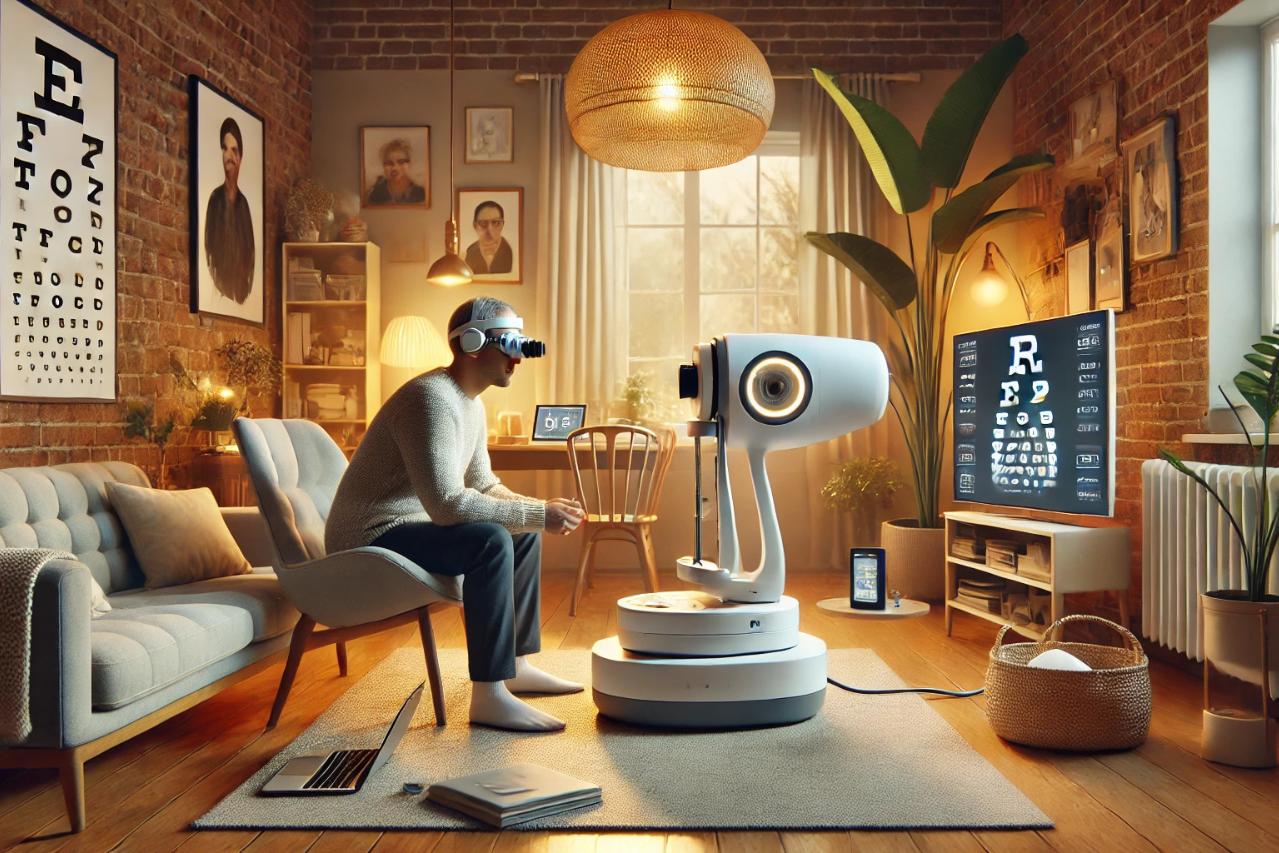A breakthrough in artificial intelligence (AI) is revolutionizing how patients with age-related macular degeneration (AMD) monitor their condition at home. Notal Vision Inc. recently introduced an AI-powered, home-based optical coherence tomography (OCT) device, allowing AMD patients to perform self-tests and transmit their results directly to their healthcare providers. This innovative tool enables physicians to closely track patients’ responses to treatment between in-office visits, potentially improving outcomes and reducing costs. The announcement was made at the American Academy of Ophthalmology (AAO) 2024 annual meeting in Chicago.
A study presented at the AAO meeting highlighted the benefits of daily self-imaging using this AI-enabled device. It concluded that “daily self-imaging can deliver better care while reducing the burden and costs on patients and the healthcare system.” These findings suggest that home-based OCT devices have the potential to transform patient care, especially for those managing chronic eye conditions like wet AMD.
How the Home OCT Device Works
The home OCT scan is quick and convenient, taking less than a minute per eye. After the scan is completed, the images are automatically sent through a built-in wireless connection to the Notal Health Cloud, where they are analyzed using AI algorithms. Physicians can then review the results remotely, enabling timely treatment adjustments without the need for frequent office visits.
Study Results: Changing the Paradigm of AMD Treatment
In the study led by Dr. Paul Hahn, 15 retina specialists examined the treatment histories of wet AMD patients (covering 37 eyes). These physicians initially made treatment decisions based on traditional in-office OCT scans. After reviewing the data from the home-based OCT scans, they reconsidered their original decisions.
Remarkably, the study found that in nearly 42% of cases, physicians believed treatment could have been delayed based on the additional home data. Conversely, in 35% of cases, they concluded that treatment could have been provided at least a week earlier than initially planned. Physicians agreed with the original timing of treatment in only 23% of cases when compared to the home OCT data, which filled critical gaps between in-office visits.
Dr. Hahn commented on these surprising results: “While I expected home OCT data to have some influence on decision-making, the magnitude was certainly a surprise. However, once we consider that physicians now have 30 times more data than before and can now ‘fill in the blanks’ between visits, this impact makes sense.”
Cost Savings and Improved Efficiency
The study also explored the cost-effectiveness of home-based OCT devices. Dr. Hahn’s team estimated that using the device could reduce drug costs by 28%, as unnecessary treatments were avoided. Additionally, fewer in-office visits resulted in savings on both procedures and productivity loss, estimated at $159 and $117 per visit, respectively.
These potential savings could significantly ease the financial burden on both patients and the healthcare system. With more efficient and personalized care enabled by home monitoring, healthcare providers can reduce unnecessary treatments while ensuring timely interventions when needed.
Dr. Hahn further emphasized the need for this type of monitoring: “Our current paradigms for treatment of retinal diseases, in particular wet AMD, require injections well in advance of disease reactivation because of the acuteness of the disease and lack of a monitoring safety net between treatment visits. The presence of home OCT data provides this much-needed safety net, which not only limits unnecessary treatments but also provides a mechanism to promptly treat patients when needed.”
Reimbursement and CPT Codes for Remote OCT
For physicians, adopting the home-based OCT device is also economically feasible. According to Notal Vision Inc., three established CPT codes—0604T, 0605T, and 0606T—allow for reimbursement of remote OCT services every 30 days. This ensures that physicians and monitoring centers can bill for their services, making the device an attractive option for both clinicians and patients.
Additionally, Notal is working with Medicare Administrative Contractors (MACs) to establish broader coverage and payment options for remote OCT, further enhancing the accessibility of this technology.
A New Era for AMD Treatment and Patient Care
The introduction of AI-driven home-based OCT devices marks a significant step forward in the treatment of retinal diseases like wet AMD. By providing real-time data and reducing the need for frequent office visits, the device enables more personalized and efficient care. As the healthcare system continues to embrace AI and telemedicine, innovations like this one promise to improve patient outcomes, reduce costs, and alleviate the burden on both patients and healthcare providers.
With AI’s growing role in healthcare, the future of managing chronic diseases like AMD looks increasingly promising, offering patients greater autonomy in their care while ensuring they receive timely and effective treatment.




